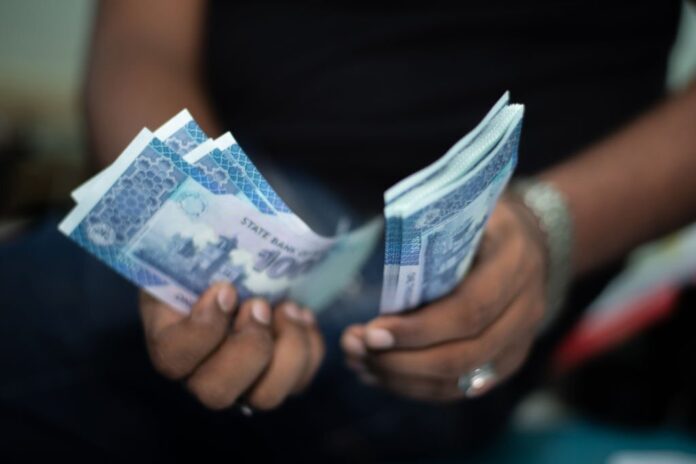Pakistani rupee got a massive hit against the US dollar for the second week in a row and shed 3.16 percent (Rs5.90) after losing 0.5 percent (94 paisas) in the preceding week.
The rupee fell from 186.63 to 192.53 against the American currency in the interbank market last week. Within the open market, the rupee suffered from 186/187 per dollar to 194/195 a dollar during the week. Overall, the rupee has depreciated by Rs35.04 against the US dollar during the ongoing fiscal year 2021-22 and Rs15.02 during the current year 2022.
The rupee started the week under pressure and depreciated in all five sessions of the week. The rupee shed 90 paisas (-0.48 percent) on Monday, Rs1.13 (-0.60 percent) on Tuesday, Rs1.36 (-0.72 percent) on Wednesday, Rs1.75 (-0.91 percent) on Thursday and Rs0.76 (-0.39 percent) on Friday. The rupee set four all-time new lows during the last four sessions of the week.
The main reason behind this rapid depreciation of rupee is delay in finalisation of an agreement with the International Monetary Fund (IMF). Pakistani authorities and the IMF team will resume discussions over policies for completing the seventh review this week. Traders and markets are looking at the IMF as progress with the Fund instils investor confidence in the economy, stabilises Pakistan’s foreign exchange reserves, and unlocks funding from other international financial institutions.
The government’s indecisiveness over economic decisions is heavily weighing on the local currency. This sharp depreciation is also attributed to the prevailing uncertainty on the economic and political fronts.
The healthy remittance flows also failed to improve sentiment on the rupee. Remittances from Pakistani citizens employed abroad rose to a record high of $3.1 billion in April. Total remittances in 10 months of this fiscal year rose to $26.1 billion, 7.6 percent higher than in the same period in 2020-2021.
The trade deficit of the country is increasing to an alarming extent which is putting pressure on the rupee. The country’s trade deficit jumped 65 percent to $39.3 billion in 10 months of this fiscal year amid higher imports. Oil sales clocked in at 2.2 million tonnes in April, compared with 1.672 million tonnes, up by 32 percent year-on-year and 21 percent month-on-month. These sales on the back of high consumption has led to the rise in oil import bill and thus stressed the foreign exchange reserves and the currency.
On the other hand, the total liquid foreign exchange reserves held by the country dropped to their lowest level since December 2019 at $16.4 billion in the week that ended May 6, from $16.5 billion a week earlier. The central bank’s reserves also decreased to a 23-month low to $10.308 billion, the SBP reported on Thursday last.
According to experts, gloomy macros will continue to put pressure on the local unit. They said though there is stress on the economy, yet some stability is visible. Despite better exports, the current account deficit has surged to alarming levels and in order to address this challenge, there is a need to look at the agriculture sector and curtail needless imports, they added.























